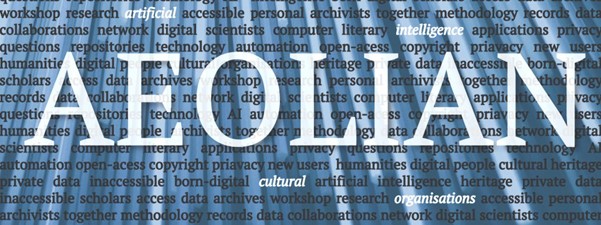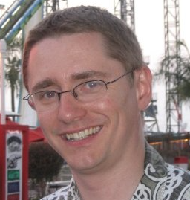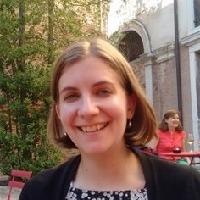Blog
Unless otherwise stated, content is shared under CC-BY-NC Licence
Archives in the UK/Republic of Ireland & AI (AURA): Some Findings for the Future of Archives and AI
Natasha Kitcher, Doctoral Researcher in the School of Social Sciences and Humanities at Loughborough University. She is Research Assistant for the AURA Project, working with Dr Lise Jaillant at Loughborough.
Last September, Dr Annalina Caputo, Assistant Professor in the School of Computing at Dublin City University, shared with the DPC community news of the AURA Network (https://www.dpconline.org/blog/aura-unlocking-cultural-assets). This AHRC-IRC research networking project brings together an interdisciplinary group of stakeholders from Digital Humanists to Computer Scientists to consider the past, present, and future of born-digital archives.
Now, almost eight months later, we are able to share some of the findings of the network with you.
Much like the born-digital archives it considers, this network was born-digitally thanks to coronavirus, which has facilitated discussions between a far-flung group of researchers and professionals in Libraries, Archives and Museums. While the group formed to consider access and usability of born-digital archives, the virtual nature of workshop attendance over the last few months has enabled scholars, archivists, librarians and other stakeholders from across the globe and at varying stages of their careers to engage in AURA’s debates.
Negotiating a deal - the groundwork
Carlo Iacono is Head of Library Research Services at the University of Bath
During the torrid time that was 2020 it was both refreshing, challenging and insightful to take up the chance to negotiate a deal with Preservica for the University of Bath.
When preparing for a negotiation (and in fact this negotiation) I start by thinking about the best/worst case scenarios and then pinpoint my specific goal that represents the best case. Given the work that had already gone into looking into Preservica, it was relatively simple for me to understand what the best case was – ‘a deal that fitted our financial constraints, allowed us to set up Preservica in a way that worked for our requirements and could develop over time’. My mindset going into an initial online discussion was specifically to expect our requirements at a cost that worked. But, I specifically did not start with a list of requirements in the discussion, as I wanted to sound out the likelihood of a deal whilst both reflecting on Preservica’s approach and their ability to work with us to get to a deal. Of course, not being able to start this process face to face added a layer of difficulty but underlined a need to be clear, concise and honest. Their initial responses and ability to openly listen to our position gave me the belief to push forward.
Too easy and fair enough?
Adam Bell is Manager, Cultural Outreach at AARNet.
AARNet is Australia’s National Research and Education Network, best known for operating the high-speed, low-latency fibre optic network that interconnects universities, research organisations, schools and major cultural heritage organisations around Australia.
In response to the pandemic and with physical site excursions banned, we saw network traffic from connected GLAM institutions rise in step with an increase in the delivery of education and outreach programs online and supporting remote access for staff.
Recently, AARNet’s role in supporting critical digital activities in organisations has expanded from the provision of network services to include infrastructure and services for data storage, collaboration and security.
As AARNet gears up to deliver new cloud infrastructure and expand existing services to meet the changing needs of the research and education sector we have sought to understand the requirements and responsibilities of researchers, data curators and institutions, including the challenges of digital preservation. AARNet is pursuing this goal through Digital Preservation Coalition membership, an international community that exists to preserve the world’s digital legacy, and by supporting several projects with digital preservation dimensions: Science Mesh, ARCHIVER and Play it Again 2.
Observations about terminology within Digital Preservation teams
Kieran O’Leary is the Digital Preservation Manager at the National Library of Ireland.
I have been working within the Digital Collections department of the National Library of Ireland for close to eight months now. We are working on many exciting born-digital pilot projects, and I look forward to going into more detail on them in a future blog. For now, I just wanted to share some observations on terminology and communication that I've noticed in my Digital Preservation roles over the years, but also within our community as a whole. I specifically want to focus on the terms: File and Ingest.
In a digital collections department,- one might expect to find a mix of Archivists, Librarians, IT professionals, and people like me who're not quite anything but let’s go with digital preservation specialist for now. Much is often made of GLAM (Galleries, Libraries, Archives, Museums) efforts to communicate needs with IT professionals, but issues around definitions and namespaces are equally difficult for GLAM workers when talking amongst ourselves.
Data Tapes and Boilerplates
Steve Daly is Head of Technology for BBC Archives.
At the BBC Archive we deal with a large variety of different multi-media assets, from physical video and audio tapes through to disk and cloud-based storage. Our highest-quality, uncompressed master video files are generally stored on LTO data tape, with copies in multiple locations.
This means we’re managing tens of thousands of data tapes and, whilst all these are heavily tracked in our warehouse and data management systems, not all the other data tapes that come into our possession have been looked-after quite so well.
Where we receive or inherit tapes created outside our own operations it can sometimes be difficult to be sure of the exact provenance of the contents and how best to read and understand them. We want to make sure we’re not creating issues like this for future users of our own data tapes, so we take a few additional steps to ensure the long-term life of our content.
Bridging the Digital Gap at the University of Bristol: introducing Sam Brenton, digital archive trainee
Emma Hancox is Digital Archivist at the University of Bristol and Sam Brenton is a Digital Archives trainee through the The National Archives’ Bridging the Digital Gap scheme.
Despite the disruption caused by the pandemic, the past year at the University of Bristol has been a busy one. As well as implementing Preservica we’ve been establishing our workflows and working on ingesting more of our digital collections.
establishing our workflows and working on ingesting more of our digital collections.
Excitingly, in the New Year we welcomed Sam Brenton as our Digital Archives trainee through The National Archives’ Bridging the Digital Gap scheme. We wanted to take this opportunity to introduce him to Digital Preservation Coalition members and ask him some questions about his experience so far.
“In the AI Tonight”: Introducing The AEOLIAN Project
Paul Gooding is Senior Lecturer in Information Studies at the University of Glasgow.
Th e AEOLIAN (Artificial Intelligence for Cultural Organisations) Network, funded under the “AHRC and NEH New Directions for Digital Scholarship in Cultural Institutions” scheme, aims to bring together scholars, computer scientists, archivists and digital preservationists to investigate the role that Artificial Intelligence can play to in making digital cultural records more accessible to users (and If you’re wondering about the awful pun in the title, the Aeolian harp is a musical instrument that is played by the wind. No, I’m not sorry…). As we prepare for our first workshop (the call for participation is out now), I hope that many of you will consider joining us over the two year project duration.
e AEOLIAN (Artificial Intelligence for Cultural Organisations) Network, funded under the “AHRC and NEH New Directions for Digital Scholarship in Cultural Institutions” scheme, aims to bring together scholars, computer scientists, archivists and digital preservationists to investigate the role that Artificial Intelligence can play to in making digital cultural records more accessible to users (and If you’re wondering about the awful pun in the title, the Aeolian harp is a musical instrument that is played by the wind. No, I’m not sorry…). As we prepare for our first workshop (the call for participation is out now), I hope that many of you will consider joining us over the two year project duration.
The Santa Barbara Statement on Collections as Data has been highly influential in shaping an ethics of curation in heritage organisations (plug alert: the Collections as Data lead, Thomas Padilla, will be on keynote duties at the first AEOLIAN workshop…). In my own research, questions around the application of AI and machine learning are a recurring theme. As the following examples show, though, those questions just as often end up being ethical and political in nature as technical and technological.
Introducing Jester
Chris Jones works for the State Library of South Australia
The State Library of South Australia has built their very own ingest tool, Jester, to optimise process automation.
Doing something is better than doing nothing
Helen Fisher is the University Archivist at the University of Birmingham.
My last blog post for the DPC ended on a positive note. In March 2020 we were about to recruit to a new post in Library Services with digital preservation responsibilities and we were hoping this would lead to institutional funding for a digital preservation system. Then we moved abruptly to home working and all recruitment was put on hold. Budget cuts mean that the financial landscape is very different as I write this post a year later and there is still a lot of uncertainty about what we might be able to do at an institutional level.
On the other hand, the switch to home working for much of last year gave me the time and space to step back and look at the problem from a different angle, to think about what was in my control and what I could do to ensure that we didn’t lose all the momentum that we had built up. I also had in mind advice from Rachel MacGregor’s presentations and blog posts that it’s better to do something than to do nothing, and so I was determined to make the most of this unexpected change in working circumstances.
An eye-opening opportunity: Report from the 16th International Digital Curation Conference
Evanthia Samaras is the VERS Senior Officer at Public Record Office Victoria. She attended IDCC 2021 with support from the DPC’s Career Development Fund, which is funded by DPC Supporters.
Recently my workplace, Public Record Office Victoria (PROV), joined the DPC. This partnership afforded me eligibility to apply for one of DPC’s Career Development Fund grants to attend the 16th International Digital Curation Conference (IDCC21) on Monday 19 April 2021. Without this generous grant I would not have been able to attend the conference. I would like to extend my gratitude to the DPC for providing me with this valuable learning opportunity. In this blog, I will share some of my learnings from IDCC21 – focusing on digital preservation-related content from the online conference.



















































































































































